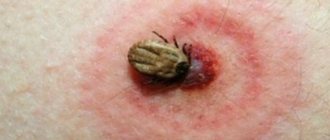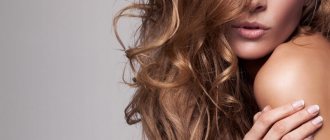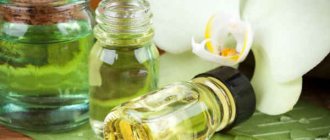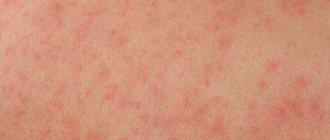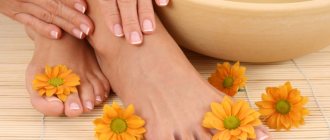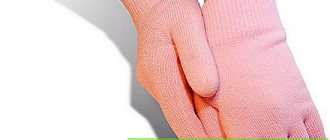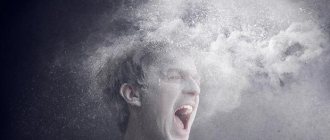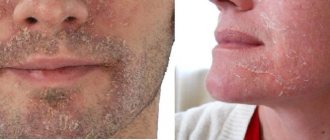Causes: domestic injury or disease?
Carefully inspect the surface of the redness. There is no need to see a doctor if it is caused by:
- shoe friction;
- improperly performed leg depilation;
- callus;
- exposure to the sun or wind;
- The cosmetic product for the feet was not suitable;
- bite of a harmless insect (mosquito);
- prickly heat.
Reasons to see a doctor immediately:
- Acute allergic reaction (urticaria).
- Infectious disease (chickenpox, rubella).
- Pityriasis rosea.
- Bite of a dangerous insect (tick, bedbugs).
Reasons why mandatory treatment is required:
- Allergic Vasculitis;
- Varicose veins;
- Diabetes;
- Hemangioma.
- Fungus on the feet and toes.
- Psoriasis.
When the source of the problem is determined, the correct treatment is prescribed under the supervision of a dermatologist or therapist.
Lump on feet
Lumps under the skin on the legs are a common occurrence. Their appearance initially does not cause concern to humans. Only a rapid increase in size of the lump, redness, severe pain, and an unaesthetic appearance of the legs make you come to see a doctor.
Such neoplasms can be different in size, origin, location on the legs, and appearance. They can be multiple and single, soft and hard, painful and painless, ulcerative and inflamed, malignant and benign.
Often, some of their types, when treatment is neglected, develop into serious complications: inflammation, suppuration, and the acquisition of a malignant nature.
Allergic diseases
Red spots on the legs indicate an allergic reaction of the body to some factor. The human body works like a clock and, if something is wrong, it gives a signal about it without indicating the source. The allergen must be determined independently or with the help of a doctor.
The causes of an allergic reaction vary:
- Incorrectly selected cosmetic product or drug;
- Contact with a chemical substance (washing powder, toilet cleaner, etc.);
- Nervous tension, severe stress;
- Allergenic product (citrus fruits, honey, chocolate);
- Pets.
Symptoms of an allergic reaction on the feet
The reaction begins immediately upon contact with the allergen or after some time. Spots on the skin of the legs are red, itchy, and irregular in shape. Small blisters may appear on the spots. For a speedy recovery, you will need to remove the allergen and take antihistamines such as Suprastin, Erius, Tavegil. Maintaining foot hygiene is important.
Help with acute allergic reactions
- Call an ambulance.
- Open the window for air access.
- Place the patient on his back on a hard surface.
- Place something soft under your head and turn your head to the side.
- Give an injection (shot) of Suprastin - two milliliters IM.
- All of the above is done quickly, but without fuss.
- If cardiac arrest occurs, perform indirect cardiac massage with artificial pulmonary ventilation (ALV); 15:2.
Symptoms
Depending on the nature of the course, the severity of the symptoms of erythema nodosum and the duration of its appearance, three types are distinguished. The symptoms of each type of pathology are slightly different.
Acute erythema nodosum
On the surface of the feet, legs, sometimes thighs and, less commonly, forearms, painful, swollen, dense nodes appear without clearly defined boundaries, which reach the size of a large walnut. They are located symmetrically on both limbs. The nodes rise slightly above healthy areas, the skin above them is bright red. Over time, the color changes: from purple-violet to yellowish-green, which resembles a “blooming bruise.” The nodes do not merge and never ulcerate.
They go away within three to six weeks. There are never any scars or traces of atrophy left at the site of their localization. There are no relapses of the disease.
Acute erythema nodosum is also accompanied by the following symptoms:
The acute form usually affects young women, children or adolescents.
Migratory type of erythema nodosum
Characterized by a subacute course. It begins with the appearance of a single node on the lower leg - flat, dense and delimited from other tissues. The skin over the node is bluish-red. Next, the node transforms into a ring-shaped plaque with a pale, sunken center. It is also possible that several small nodules may appear on both legs.
This form is accompanied by:
The duration of erythema nodosum can last up to several months.
Chronic type of erythema nodosum.
The course of the disease is chronic with spring-autumn seasonal exacerbations. The nodes are weakly expressed - they do not rise and do not change skin color, and can only be detected by palpation. As a rule, they are localized on the legs in their anterolateral part. Chronic erythema nodosum has a protracted course - some nodes resolve, others appear to replace them.
Typically, elderly and middle-aged women who have any inflammatory diseases, tumors or foci of chronic infections are susceptible to pathology.
Source: idermatolog.net
Psoriasis
This is the most common disease, as the causes of its occurrence are various:
- allergy;
- taking medications for a long time;
- breakdown;
- immunodeficiency;
- acclimatization, etc.
Most often, psoriasis appears on the legs. You can recognize it if you scratch the red spot - it will become glossy and covered with droplets of blood.
The dermatologist prescribes ointments to relieve inflammation and peeling, glucocorticoid and corticosteroid drugs. A strict diet and a vitamin-mineral complex for immunity are prescribed. The disease is chronic. To prevent psoriasis from returning for a long time, you need to eat right and lead a healthy lifestyle.
Common types of cones
There are many diseases that lead to the formation of a subcutaneous lump. Let's name the most common ones.
Gout
A disease that develops due to metabolic, metabolic and hormonal disorders. With it, uric acid salts begin to rapidly deposit in the joints. Pain and swelling appear, redness near the joint affected by the pathology, shine of the skin, temperature rises, and weakness is present. As gout progresses to the chronic stage, red bumps (tophi) form under the skin, which soften slightly during attacks. They can appear in any part of the body, including the hands.
Bursitis
This is the development of inflammation in the synovial joint sacs. There are acute and chronic forms. The first is the result of an injury in the area of the periarticular bursa, and may also be a consequence of previous influenza, furunculosis, or osteomyelitis. The knee, elbow joints, and less commonly the hip joints are affected. A soft elastic ball forms under the skin in the area of the affected joint. He constantly hurts and his temperature rises. If you do not consult a doctor in a timely manner, the disease will progress and become chronic.
It develops with an advanced acute form, regular exposure to the periarticular bursa. The pathology does not lead to impairment of motor function, but causes some limitations. Neglect of treatment leads to the fact that such a “ball” hurts, forms a long-term non-healing hole under the skin in the form of a fistula, and arthritis develops.
Varicose veins
Varicose veins are an increase in the volume of veins located close to the surface of the skin. The disease most often manifests itself on the legs, but it is possible that it may appear on the walls of the esophagus, rectum and bladder, vagina, and arms. Pathology provokes the development of inflammation in the veins. They gradually harden and form aneurysm-like local expansions - red nodes or bumps.
The main signs of varicose veins are:
- swelling of the ankles and legs;
- the appearance of a venous subcutaneous network;
- formation of ulcers, calluses;
- development of eczema, pigmentation on the lower leg and ankles;
- edema.
The causative factors of the disease are considered to be: age-related transformation of the walls of the veins, a sedentary lifestyle, prolonged sitting, pregnancy, and postural defects.
Valgus deformity
If a lump appears on the thumb with a curvature of this finger and the middle one, this is a hallux valgus deformity. It externally represents a rounded ball from the inside of the foot. The lump is hard, constantly hurts, there is redness and swelling. The root cause of the appearance is weak tendons, endocrine disorders, osteoporosis, arthrosis, flat feet, and uncomfortable shoes.
Subcutaneous cyst
This is a benign cavity tumor filled with pus or fluid. It can form not only on the legs, but also on the arms. The lump feels like a medium-density small ball. It is formed due to infection, closure of the sebaceous glands, or the entry of a foreign body. It has the following symptoms: it does not hurt, it increases slowly, and when pressed it moves slightly to the side.
Dermatofibroma
Harmless red, round growths that form subcutaneously on the legs and arms. The exact reasons for its appearance are unknown. Their main features are:
- purple, brown, or red growths;
- their diameter varies in the range of 0.3-0.6 cm;
- in rare cases they cause itching, burning and pain.
Lipomas
These neoplasms are red balls formed from soft subcutaneous tissue. To the touch, lipomas are elastic and soft lumps. They grow slowly and are not harmful to health. Both single and group cones appear. The size of most is within the 5 cm range; they do not cause discomfort or unpleasant sensations. Pain occurs only when lipomas press on nerve endings.
Enlarged lymph nodes
A small ball (up to 0.5 cm), located on the back of the foot or sole. When palpated, the lymph nodes are dense and hot. The formation of such a “bump” is combined with infectious symptoms: general weakness, fever.
Advice
If subcutaneous lumps appear on your leg, you should immediately consult a doctor. Timely diagnosis is the key to successful treatment and preventing the development of complications.
Infectious diseases
Pityriasis rosea
An infectious disease, but not dangerous. Infection occurs due to weakened immunity. Red spots with clear boundaries of different sizes appear on the skin of the legs. The spots are slightly raised, flaky and itchy. In a short time they spread throughout the body. Weakness and low body temperature are observed.
Treatment is prescribed after examination by a dermatologist, who determines the exact type of lichen. Symptoms go away after six weeks without treatment. If the spots cause discomfort, antihistamines are taken. It is mandatory to take vitamins to boost immunity. Do not allow lichen lesions to come into contact with water. A person who has had shingles acquires immunity for life.
Fungus on feet
Red spots on the feet and between the toes may indicate athlete's foot. Redness on the feet itches and peels. Only a dermatologist can determine foot fungus using bacteriological culture; he will prescribe antifungal drugs (onycholactics, gels, creams and tablets).
Diabetes
In people with diabetes, the body's immune system suffers. Therefore, skin infections and dermopathy occur. The formation of red spots with blisters on the lower leg is associated with damage to the blood vessels of the legs; treatment is not required. Infectious diseases cause swelling, inflammation and severe redness of the skin. Skin diseases can be prevented by following a diabetic diet, taking medications, and controlling blood sugar levels.
Hemangioma
A tumor on the skin is not dangerous. It looks like a red formation, blue ones are less common. Spots with uneven edges, different shapes and sizes. Appear on the legs and feet. Gradually they become smaller and whiter until they disappear. If this does not happen after a month, the spot is removed using a laser or surgery.
Varicose veins of the legs
This is a disease of weak blood vessel walls in the legs. Red and blue spots similar to stars appear on the calves. At first they don't bother you, but then they itch. Heaviness begins, pain in the legs while walking, shortness of breath.
Varicose veins are inherited from mothers and grandmothers. More often women suffer from it. The provoking factor is wearing high-heeled shoes, being overweight, and frequently squeezing the veins in a sitting position. Treatment is prescribed only by a doctor. When the form is not advanced, compression stockings, tights, therapeutic massage, taking pills, using ointments and gels to strengthen blood vessels, and medications that thin the blood in the veins are used. In advanced forms, varicose veins are treated surgically and sclerotherapy.
Don't ignore any changes, even if they don't bother you. Redness on the legs indicates the above diseases. The main thing is to understand the level of danger in time. Do not self-medicate under any circumstances. Be sure to consult a dermatologist or therapist.
General information
Erythema nodosum (photos demonstrating the visual manifestation of the disease are below) is an inflammation of the skin and fatty tissues. As a result, red nodules form on the surface. Their size can vary from the diameter of a cherry to the corresponding parameters of an orange. This phenomenon can be a symptom of various ailments. But often the true nature of the disease cannot be determined. Therefore, erythema nodosum on the legs is considered in most cases as an independent disease.
Ointment for age spots on the body
Pigment spots appear on the human body for various reasons. It’s worth starting with stains that appear due to prolonged exposure to ultraviolet radiation. It is best to prevent the appearance of such spots with sunscreen creams that have special filters. If a person was unable to prevent the appearance of age spots, then special ointments for age spots that have a whitening effect will come to the rescue.
But there are other reasons that provoke the appearance of age spots on the body. The following ointments, which have whitening properties and are in demand among buyers, will help cope with such stains, congenital or acquired:
1 Zinc ointment . A positive feature of this drug is its versatility - zinc ointment can be used to combat age spots on the face. This will not only help remove blemishes, but will also help with other problems – acne. Many doctors note that zinc ointment effectively and quickly copes with its main task. You can apply this product up to six times a day. Before use, it is recommended to check for an allergic reaction - apply a little ointment to the crook of your elbow and check the condition of the skin.
2 Sulfur ointment . It is also considered an effective drug for combating excessive pigmentation and acne. The effect of the drug differs slightly from the effect of zinc ointment - sulfur ointment acts as menthol to dry out the skin at the site of application of the ointment. Then the epidermal cells exfoliate, thereby eliminating the pigment spot. This drug is not applied as often as the first - only once a day. Among the negative aspects, it is worth highlighting the sharp unpleasant odor and the possibility of developing an allergic disease.
Ointment for red spots on the body
Clearvin is a preparation based on herbal and chemical components that helps smooth damaged skin and eliminate spots by whitening them. After red spots, atrophic scars may remain on a person’s skin, which can be eliminated quite well with this particular drug.
Among other drugs, I would like to highlight Contractubex ointment. Among the positive aspects is that this drug is suitable for people of all ages and can be applied 2 times every day. Using Contractubex, you can quickly get an even skin tone, while eliminating various spots, including red spots after acne.
Features of treatment for pregnant women
The disease does not affect the fetus at all. However, erythema nodosum can be dangerous for a pregnant woman. The consequences of the disease sometimes manifest themselves in the form of heart complications.
If there are no exacerbations, the patient is prescribed local treatment. The affected areas are lubricated with Indovazin Ointment. The drug "Curantil" is taken internally. Paracetamol is prescribed in small doses. To reduce inflammatory processes, a minimum dosage of Aspirin is recommended. The treatment includes Deep Relief ointment. The drug "Diclofenac" is prescribed in injections.
An important condition for treatment during pregnancy is full compliance with the correct rest and work schedule. It is necessary to minimize the load on the lower limbs, but it cannot be completely eliminated, because the vessels of the limbs must always be in good shape.
Consequences and complications
If brown pigmentation on the legs is associated with sun exposure, uncomfortable shoes or unsuccessful hair removal, no complications are observed.
If the appearance of brown spots is caused by diseases and treatment is not carried out on time, then bad consequences and complications cannot be avoided:
- If pigmentation on the legs caused by diabetes or atherosclerosis is not treated, the spots will begin to increase in size, transform into ulcers, fester and hurt.
- By delaying the treatment of a brown rash in the leg area, the appearance of which was provoked by neurofibromatosis, deformation of bone tissue may begin. This disease can cause a number of complications: spinal cord tumor, complete loss of vision and hearing.
- Untimely treatment of brown formations caused by varicose veins can cause serious complications to a person. When the form is advanced, bleeding begins, thrombosis begins (the vein closes with a blood clot), the venous walls become inflamed, and subsequently a trophic ulcer forms.
Don't delay visiting the doctor. As soon as brown pigment spots appear on your legs, seek help from a medical facility, where they will determine the cause of the dark formations and provide timely treatment.
Features of the disease in children
The disease is more common in girls over the age of six. Rashes on the surface of the skin usually occur in cold weather. Symptoms of the disease appear on the sixth day.
Erythema nodosum in children is characterized by general malaise and moodiness. There is pain in the joints and in the abdominal area. Hot, quite painful nodes appear on the body.
Often the disease is combined with damage to the joints. In this case, the latter swell, redness appears, and pain occurs during movement. Inflammation in the joints goes away after a few days, but the pain persists for some time.
Erythema nodosum on the legs is treated with anti-inflammatory drugs. Drugs such as Aspirin, Indomethacin, and Brufen are often prescribed. Local warming compresses are applied to the affected areas. For them, heparin ointment and ichthyol solution are used. It is very important to notify the doctor about the child’s illness. It should be remembered that self-treatment of the disease is quite dangerous.
Causes of nodular shape
The cause-and-effect relationship between the appearance of this disease cannot always be traced.
But the patient should not hide the presence of the following number of diseases, since they are provocateurs for the development of erythema:
- Syphilis;
- Behçet's disease;
- Inflammatory process in the intestines;
- Trichophytosis;
- Tuberculosis;
- Hepatitis B;
- Gonorrhea;
- Yersiniosis;
- Trichophytosis;
- Blood cancer;
- Sarcoidosis;
- Presence of a bacterial infection.
The disease can develop independently in the following situations:
- After using certain groups of medications (antibiotics, sulfonamides, oral contraceptives, sulfones);
- With severe hypothermia of the human body;
- With hypovitaminosis;
- In case of malfunction of the endocrine system;
- When detecting fluid stagnation in the lower extremities.
People whose lives include at least one of the items from the above list may consider themselves at risk. This means they must learn about this disease and ways to combat it.
Effective treatment methods
All recommendations for the treatment of erythema directly depend on what provocateur it was caused by.
In cases where an infectious factor is detected, an antibiotic (tetracycline, rifampicin, penicillin or streptomycin) is prescribed.
To obtain a better result, antibiotics are combined with corticosteroids (prednisolone). All dosages are prescribed by the doctor and must be followed by the patient.
In addition to the listed drugs, anti-inflammatory medications are used:
- Nurofen (ibuprofen);
- Acetylsalicylic acid;
- Indomethacin;
- Butadion;
- Potassium iodide.
Despite the simplest list of drugs, in cases of initial encounter with the disease, the patient can resort to hospitalization.
Since only this method can strictly control the development of the disease, you can be completely confident that the course of treatment has been chosen correctly and you should not expect relapses of the pathology in the near future.
Prevention
To prevent the development of skin hyperpigmentation and other problems of a similar nature, you must follow simple rules:
- If you are exposed to the scorching rays of the sun for a long time, you need to use special sunscreens. At such times, it is recommended to wear clothing that will protect the skin as much as possible from exposure to ultraviolet radiation. And if possible, you should avoid staying on the street altogether.
- It is necessary to adhere to the optimal drinking regime and eat right.
- When the first alarming symptoms appear, you need to visit a doctor to have your body examined.
Brown spots on the skin are most often an alarming sign of a malfunction in the body. Therefore, you should not neglect treating the problem, especially if it is accompanied by other unpleasant symptoms.
